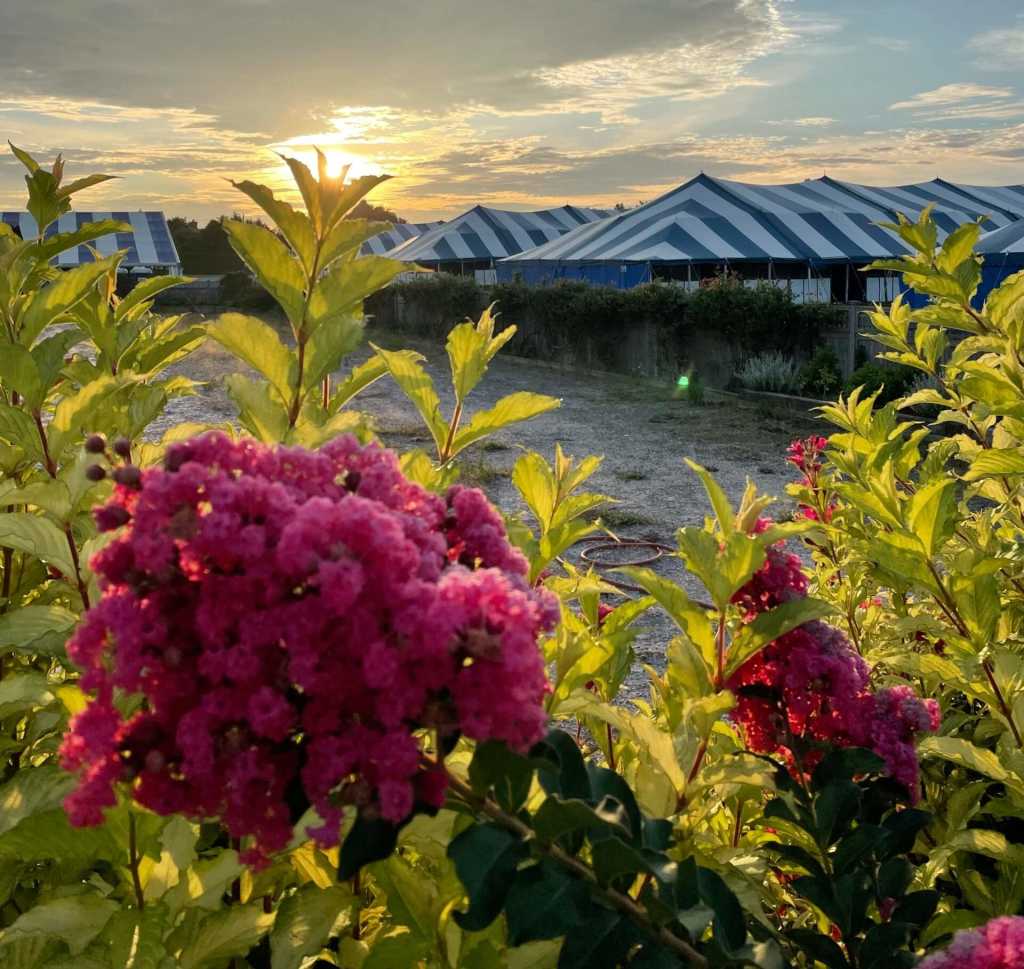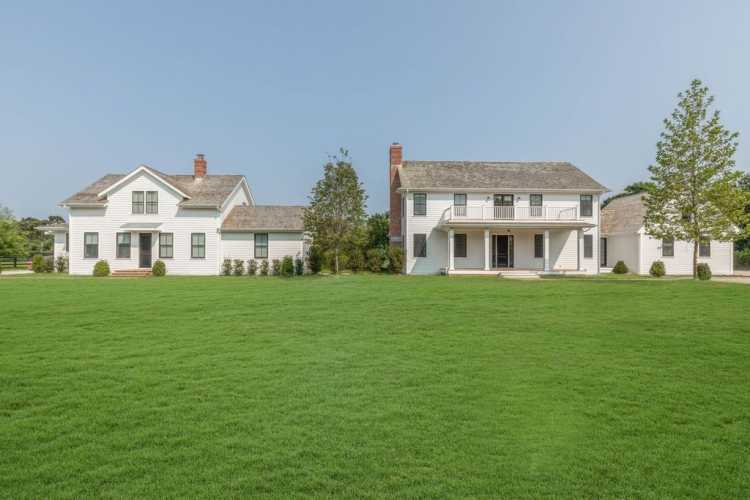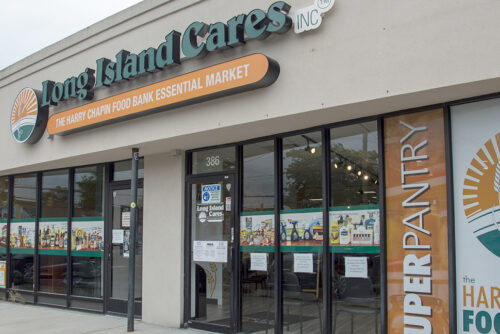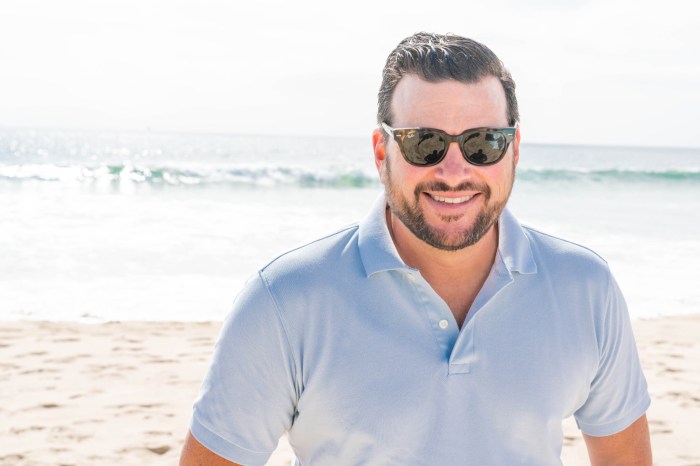The Hampton Classic Horse Show hosts more than 1,400 horses and riders and 50,000 spectators for the highly-acclaimed, end-of-summer competition, one of the largest shows in the United States. The show started last week on manicured showgrounds and when it culminates on Sunday, the Grand Prix tent will be decorated to the nines with beautiful floral centerpieces.
Flower deliveries for a party are one thing, but maintaining 65 acres of showgrounds is another endeavor. What many don’t realize is that keeping the show grounds in blue-ribbon shape is a year-round effort.
“There’s a different look to a place that has established plants, where it almost looks like it should be there,” says Kate Soroka, the assistant site manager, who with David Dimijian, the site manager, is among those who work hard year after year on the Snake Hollow Road property in Bridgehampton.
“We have the ability, because we’re here all year long, to have an established look to the horse show, and then we add a lot of the luxury and color pops the week before,” she says, noting that it is enabled by a partnership with Marders, the landscaping firm located just down the block.
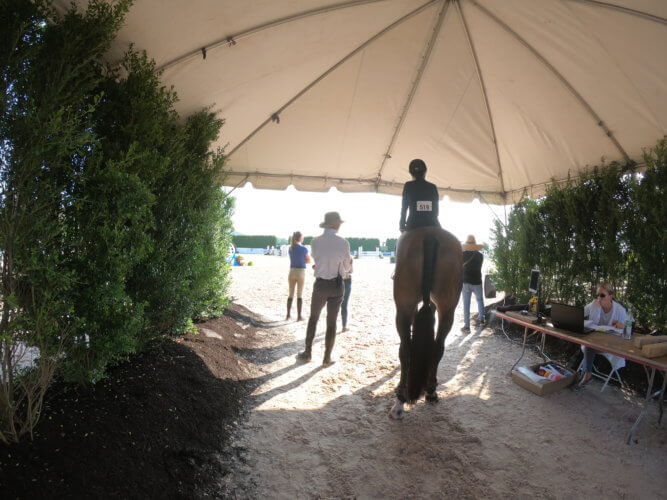
Now in their 46th year, the horse show grounds improve each year on a foundation laid by Agneta Currey, a board member for nearly three decades and former chairwoman. Currey and her husband, Brownlee O. Currey Jr., were among the Classic’s longest-standing sponsors.
The couple owned many successful hunters and jumpers. Most notably they were part owners of the thoroughbred mare, Touch of Class, whom Joe Fargis rode to double gold medals at the 1984 Olympic Games.

Currey headed the original “flower committee,” bringing color and beauty to the show grounds in the late 1980s and ’90s.
“There’s a lot of influence of Agneta around,” Soroka says. Currey, who passed away in 2020, had been an active volunteer since 1977 and worked closely with Conrad Homfeld, an Olympic champion and longtime course designer. “Together they had a lot of passion for flowers,” Soroka says.
Soroka’s connection with the Hampton Classic goes back to 1994 as her mother worked at the show in various capacities. She got a summer job at the show later in the ’90s and has been working full-time for the Classic for 10 years.
Over the years, she enjoyed Currey’s visits to the Classic, walking the grounds with her and hearing her recommendations. Soroka remembers how she loved knockout roses and color.
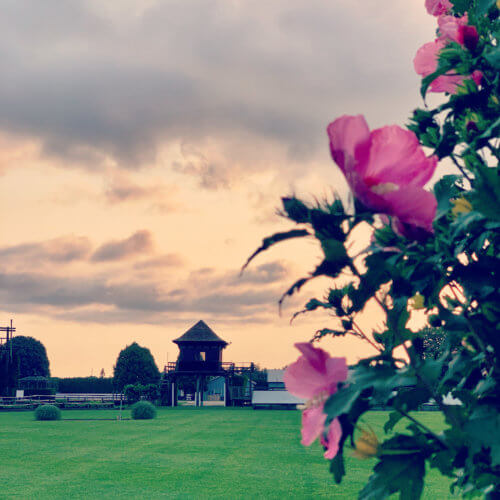
“You never knew when she was here,” Soroka recalls. “She would just roll up, you’d see her car and you knew she was wandering somewhere in Hunter 1 or in the Grand Prix Ring, just looking to see what had come back.”
Upon Currey’s retirement, the horse show named the Boutique Garden after her. The Agneta Currey Boutique Garden holds over 70 vendors during the show, making it one of the most traversed areas on the show grounds.

“The pristine and immaculate look of the horse show grounds and vendor areas is due primarily to Agneta’s direction and personal involvement,” executive director Shanette Barth Cohen said of the 2018 decision. “We think the naming of the Boutique Garden in her honor is a most fitting way to ensure that she remains part of the Hampton Classic forever.”
The look has remained that of an established Southampton estate. It is important to Homfeld, Soroka says, to keep the aesthetic of the Hamptons gardens.
But the show crew is not tending to the acreage in the same way that a landscaping crew would be at Hamptons homes.
“When I go to fertilize, I’m not fertilizing in the spring,” Soroka says. “Those flowers need to hold off blooms as long as possible. It’s hard to get beautiful, hot-color flowers to bloom at the end of August and stay. That’s always a big thing. When we were doing the live planters, it’s not what’s going to bloom in July, it’s what’s going to bloom on that cusp of late summer and fall.
“We want everything to wait until late August and that’s asking a plant a lot,” she says with a laugh.
She also feels sometimes bigger-leafed plants and flowers and more foliage were better suited for the rings, since small flowers cannot be seen from afar.
There are special considerations for decorating the rings with the safety of the horses and riders a primary concern. “It’s not just about making it look pretty. It’s also about functionality with the horses, especially.” What will be affected by the wind and blow over is a logistical concern so as not to spook the horses.
Since the crew is responsible for a large property, “We try to be, what I’m gonna consider, pollinator-friendly,” Soroka says.

Soroka says the Classic has “amazing flowers” all year long and in each season, providing for the different birds and pollinators, such as lavender that is in full bloom in June. “There’s not a whole lot of land left on the East End, so it’s nice to have this land to help with that.”
She works closely with Silas Marder, who is also a board member at the Classic. “Marders really brings the show to life with their inventory,” she says, adding that the Marders team’s creativity and ability creates a welcoming atmosphere with plants and trees.
“In Hunter 1, they take the rose-of-Sharon in the corners and fan out the branches to create a new shape, adding a dynamic aspect to the plant making the corners intriguing to look at,” she continues.
“This year, they have brought plants into the Grand Prix Ring including red mandevilla and two gorgeous hornbeam trees,” Soroka says. “Every year, Silas creates a fairytale entrance into the main VIP tent in the Boutique Garden.”
This year’s Classic marks the debut of a new Grand Prix arena, featuring state-of-the- art all-weather footing. Because of the new footing, Soroka says it is important to avoid soil contamination and the Classic has moved from heavy soil-based planters to silk arrangements.
Flora Baptiston of Brazil, who is not only a Fédération Equestre Internationale (FEI) judge, but who has been assisting with the course décor at the Olympics, the World Games and other top equestrian events, is lending a hand in that regard.
Visitors may notice silk gladiolas, sunflowers and peonies.

“Flora will come and she’ll make arrangements with the silk flowers and they will go amongst the living arborvitae and living privet and living fern,” Soroka says. She counts 950 ferns. It’s not as much upkeep as it sounds. “They are just here for competition,” Soroka explains.
“But, what’s nice about arborvitae all around the property is that they have come from the rings at some point. We used to get 140 arborvitaes every year. That’s how we kind of started to make up some of these lines of arborvitae — reusing, being sustainable, reusing what we bought,” she says.
They buy more privet now, for a few reasons, the deer issue, as well as monoculture, “because if one arborvitae gets a disease, the rest gets diseases and you don’t necessarily want to make spraying your go-to. You want to see how else you can better the landscape,” she says.
“So we chose to get more privet now and we’re able to use the privet from the Grand Prix Ring in the fall to underplant and also take some of the older privet out from the hedges and rejuvenate that. When we’re buying stuff we really think about how we can reuse it.”
She adds, “Everything has intention.”
Organically Green Horticultural Services, a Classic sponsor, helps Soroka and the crew keep the arborvitae and other plants and flowers from the deer.
Sometimes the deer can actually help. Soroka points to the hydrangeas by the United States Equestrian Team VIP Tent ramp. “The deer eat the trunks and it looks great. They do a great job!”
Soroka notes she is anxious about the “beautiful pink mallow flowers,” a choice of Silas Marders, that have made the Hunter 2 ring “pop,” she says. “I will not be satisfied until Labor Day that the deer won’t eat it!”
It’s a year-round effort. After the show, “We turn into 65 acres of grass that needs to be mowed. The hedges need to be trimmed.”
When the Grand Prix winner’s mount takes the final gallop around the ring on Sunday and the last trailer pulls out of the showground on Labor Day, the crew’s offseason begins.
“The grounds get a nice rest until winter, and we don’t cut anything back until spring,” Soroka explains. “It’s like hibernation time. I think it’s really actually important for a property like this.
After all, the Classic grounds will continue its legacy for many more years to come.
This article appeared as the cover story for the September 2022 issue of Behind The Hedges. Read the digital version here.

